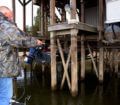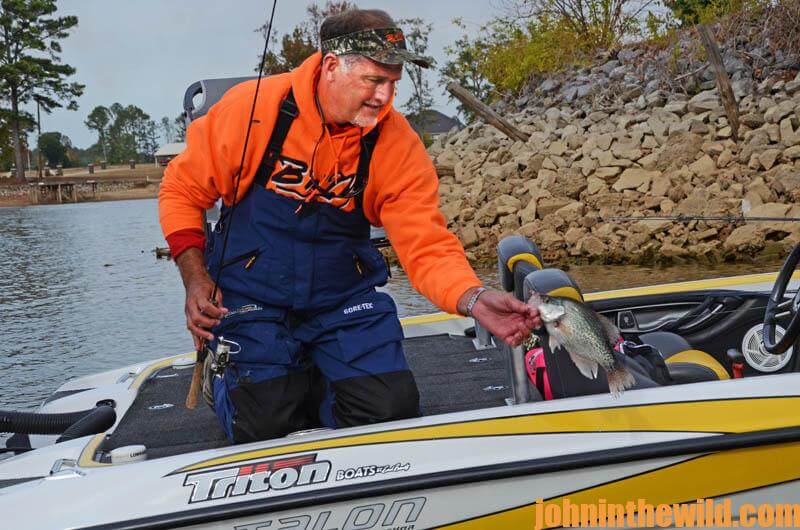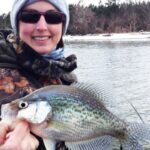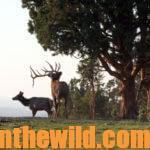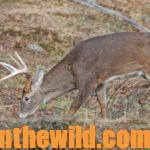John’s Note: Darrell Baker of Centre, Alabama, has been fishing and guiding on Weiss Lake in northeast Alabama for 40 years. He’s seen wintertime drawdowns and droughts and fished in freezing weather during the winter months. The State of Alabama has had one of the worst droughts that we’ve ever seen this past year in 2016. When we went fishing in the middle of November with the lake 6-feet below normal pool, I was surprised when Baker said, “The first thing we’re going to do is shoot docks.”
 For many years, Weiss Lake in northeast Alabama has been known as the Crappie Capital of the World. I’m sure there are other lakes that offer fantastic crappie fishing and may challenge that title. I wanted to know what made Weiss Lake produce so many big crappie – not only in the spring and summer, but also in the fall and winter. Darrell Baker answers, “Because we’re located in north Alabama where there are plenty of fertile soils and a long growing season, I believe that helps Weiss Lake produce large numbers of big crappie. We have really-warm temperatures up until October and November, and sometimes even into December, January and February.
For many years, Weiss Lake in northeast Alabama has been known as the Crappie Capital of the World. I’m sure there are other lakes that offer fantastic crappie fishing and may challenge that title. I wanted to know what made Weiss Lake produce so many big crappie – not only in the spring and summer, but also in the fall and winter. Darrell Baker answers, “Because we’re located in north Alabama where there are plenty of fertile soils and a long growing season, I believe that helps Weiss Lake produce large numbers of big crappie. We have really-warm temperatures up until October and November, and sometimes even into December, January and February.
“Weiss Lake is also a relatively-shallow lake with a lot of brush and stake beds in it. Quite a bit of manmade structure is put into the lake every year, and an abundance of natural structure like stumps and roots are on the edges of the river channels and creek channels. A group of concerned citizens has established the Weiss Lake Improvement Association (http://www.weisslakeimprovementassociation.org/) that has worked really hard putting in brush piles and stake beds to continue to improve the habitat of the lake for both crappie and bass.
“Another thing that helps Weiss Lake is this lake was built in the early 1960s at a point where three different river systems converged. The largest river system is the Coosa River, and Weiss also has the Chattooga River and the Little River. So, unlike many lakes, we have three different old river channels as well as the tributary creek channels that are used to feed those rivers underwater. The Coosa River is primarily a stained river all year round. Little River is a really-clear river. So, in the spring of the year, when W eiss receives a lot of rain and the Chattooga and the Coosa muddy-up, you can find clear water in the Little River part of the lake. I really prefer to fish stained water, so most of the year I’ll be fishing the edge of the Coosa River channel. I’ve had some big crappie on the end of my line through the years at Weiss. But for some reason or the other I’ve lost them. The biggest crappie I’ve put in the boat from Weiss Lake weighed 2 pounds 13 ounces.”
eiss receives a lot of rain and the Chattooga and the Coosa muddy-up, you can find clear water in the Little River part of the lake. I really prefer to fish stained water, so most of the year I’ll be fishing the edge of the Coosa River channel. I’ve had some big crappie on the end of my line through the years at Weiss. But for some reason or the other I’ve lost them. The biggest crappie I’ve put in the boat from Weiss Lake weighed 2 pounds 13 ounces.”
To contact Baker, you can reach him at www.weisslakecrappieguides.com, or call his cell phone at 256-557-0129, or email him at Darrell@weisslakecrappieguides.com.
To learn much more about crappie fishing, get John E. Phillips’ Kindle eBooks and some print books, “Crappie: How to Catch Them Fall & Winter,” “Crappie: How to Catch Them Spring and Summer,” “Catch Cold Water Crappie Now” and “Catch Crappie All Year: Fishing a Single Pole, Using No Boat and Farming Crappie” by clicking on each, or go to www.barnesandnoble.com or to https://johninthewild.com/books/#crappie
To receive and download for free “The Crappie Catchers’ Cookbook,” by John and Denise Phillips, go to https://johninthewild.com/free-books.

